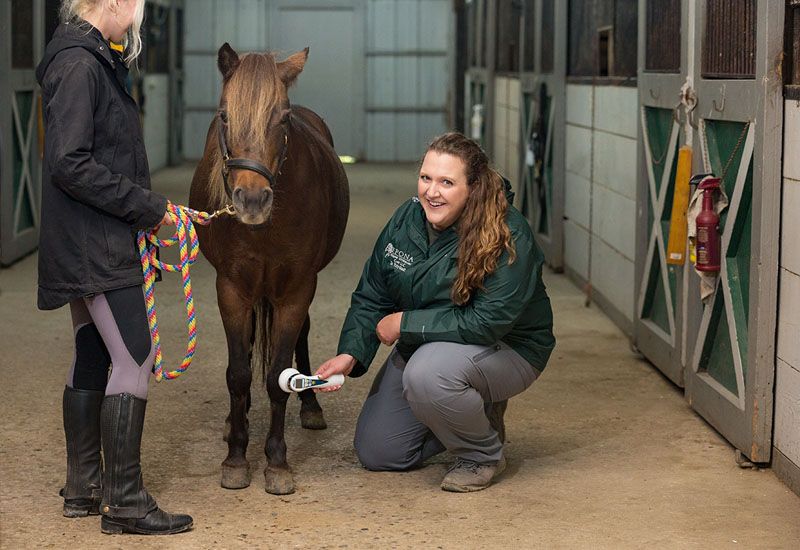Equine Therapy Success Stories: Actual Individuals, Real Psychological Changes
Equine Therapy Success Stories: Actual Individuals, Real Psychological Changes
Blog Article
Exploring the Perks of Laser Therapy in Equine Therapy for Enhanced Recuperation
The development of laser treatment in equine treatment provides an encouraging opportunity for boosting healing and total wellness. Especially reliable for soft tissue injuries, laser treatment additionally plays a substantial duty in handling chronic pain and enhancing blood flow. Its capability to improve collagen manufacturing further contributes to tissue stability.
How Laser Therapy Works
Laser treatment, a sophisticated modality in equine therapy, runs by sending out specific wavelengths of light to pass through tissues and promote mobile processes. This sophisticated modern technology harnesses the power of photons to communicate with chromophores within the cells, triggering photochemical responses that boost mobile metabolism. The key mechanism entails the absorption of light by mitochondrial chromophores, bring about boosted production of adenosine triphosphate (ATP), the cell's energy currency.
The altitude in ATP levels accelerates numerous biological procedures, consisting of improved protein synthesis and cell spreading. Furthermore, laser therapy modulates inflammatory feedbacks by lowering pro-inflammatory cytokines and boosting anti-inflammatory cytokines. This double action aids in reducing pain and advertising tissue fixing.

Benefits for Soft Cells Injuries
When addressing soft cells injuries in horses, laser treatment provides a plethora of benefits that dramatically enhance healing end results. Soft tissue injuries, including tendons, ligaments, and muscles, prevail in equine professional athletes and commonly call for extensive healing periods. Laser treatment, or photobiomodulation, promotes cellular regrowth and enhances cells repair service by stimulating mitochondrial activity, consequently speeding up the all-natural recovery process.
Among the main benefits of laser treatment is its ability to reduce inflammation. By targeting the damaged location with specific wavelengths, laser treatment minimizes the inflammatory action, lowering swelling and linked discomfort. This anti-inflammatory effect is vital in taking care of the preliminary phases of injury, where too much inflammation can hamper recovery.

Furthermore, laser therapy stimulates the manufacturing of collagen, a crucial healthy protein for preserving the integrity and flexibility of soft tissues. Raised collagen synthesis increases the repair work of damaged structures, lowering the risk of reinjury. Subsequently, laser therapy supplies a non-invasive, drug-free solution for expediting the rehabilitation of soft cells injuries in equines.
Taking Care Of Chronic Discomfort
In the realm of equine medical care, handling chronic discomfort presents a substantial challenge, frequently needing complex techniques for effective therapy. Persistent pain in steeds can stem from a selection of sources, consisting of arthritis, laminitis, and various other degenerative problems. Conventional monitoring techniques, such as anti-inflammatory medicines and physical treatment, have their advantages yet can be limited by adverse effects and irregular efficacy.
Laser therapy has actually emerged as a promising adjunctive therapy for managing persistent discomfort in horses. This non-invasive technique uses specific wavelengths of her comment is here light to permeate tissues, advertising mobile fixing and decreasing swelling. By enhancing microcirculation and promoting the release of endorphins, laser treatment can offer significant pain relief without the adverse effects generally connected with drugs.
The capacity to target certain pain sites specifically makes laser treatment a flexible tool in the comprehensive discomfort administration arsenal. As research proceeds to progress, the assimilation of laser therapy in equine chronic pain monitoring holds significant potential for improving the quality of life for influenced equines.
Enhancing Healing Times
Building on the promising outcomes observed in discomfort administration, laser therapy likewise shows significant potential in improving recuperation times for equine clients. This technique functions by accelerating mobile regeneration and boosting blood flow, which are important factors in the recovery procedure. The application of laser therapy promotes the manufacturing of adenosine triphosphate (ATP), thereby enhancing the power offered for mobile repair service and decreasing inflammation.
Medical researches have demonstrated that steeds treated with laser therapy exhibit quicker healing from bone and joint injuries, operations, and a fantastic read soft cells damages. The reduction in inflammation and pain not only aids in faster tissue fixing yet also permits earlier and extra reliable rehabilitation workouts. This is specifically useful for efficiency steeds, where minimizing downtime is important for preserving competitive timetables.
Additionally, laser treatment can be exactly targeted to certain injury websites, guaranteeing that the restorative impacts are localized and potent. This accuracy lowers the likelihood of negative effects and advertises extra consistent recuperation end results. Consequently, equine veterinarians are progressively integrating laser treatment into their therapy methods, identifying its effectiveness in quickening recovery times and enhancing the general my sources recovery process for equine people.
Improving General Health
As laser treatment proceeds to get grip in equine medication, its advantages prolong beyond just injury recovery, considerably adding to the total health of horses (Equine Therapy). This therapeutic method has shown efficiency in alleviating persistent discomfort, decreasing swelling, and advertising mobile regeneration. Such outcomes are not just critical for healing however additionally improve the lifestyle for equine individuals, guaranteeing they stay energetic and material
Among the essential facets in which laser therapy help in enhancing overall health is with its analgesic effects. Discomfort administration is vital for equines, especially those involved in affordable sporting activities or strenuous tasks. By mitigating discomfort, laser treatment enables these animals to execute efficiently and reduces the danger of offsetting injuries.

Final Thought
In summary, laser treatment provides a significant advancement in equine therapy by stimulating mobile regeneration, decreasing swelling, and speeding up healing procedures. Laser treatment emerges as an invaluable tool for optimizing rehab and enhancing the general health of equines.
Report this page